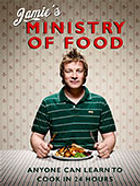- Healthy recipes
- Healthy snacks
- Healthy lunches
- Healthy chicken recipes
- Healthy fish recipes
- Healthy vegetarian recipes
- Main Ingredient
- Chicken
- Pasta
- Vegetables
- Fish
- Beef
- Eggs
- View more…
- Special Diets
- Vegan
- Vegetarian ideas
- Gluten-free
- Dairy-free
- Budget recipes
- One-pan recipes
- Meals for one
- Breakfast
- Desserts
- Quick fixes
- View more…
- Baking recipes
- Cakes
- Biscuit recipes
- Gluten-free bakes
- View more…
- Family recipes
- Money saving recipes
- Cooking with kids
- School night suppers
- Batch cooking
- View more…
- Special occasions
- Dinner party recipes
- Sunday roast recipes
- Dinner recipes for two
- View more…
- 5 Ingredients Mediterranean
- ONE
- Jamie’s Keep Cooking Family Favourites
- 7 Ways
- Veg
- View more…
- Nutrition
- Features
- Cheap eats
- Healthy meals
- Air-fryer recipes
- Family cooking
- Quick fixes
- View more
- How to’s
- How to cook with frozen veg
- How to make the most of your oven
- How to make meals veggie or vegan
- View more
- More Jamie Oliver
- YesChef x Jamie Oliver
- Cookbook Club
- Jamie Oliver Group website
- Jamie Oliver Cookery School
- Ministry of Food
- Vegepedia
Chicken chow mein
With pak choi, mushrooms & noodles
- Dairy-freedf

With pak choi, mushrooms & noodles
- Dairy-freedf
“If you're partial to a Chinese, you'll love my take on the classic chicken chow mein recipe ”
Serves 2
Cooks In20 minutes
DifficultySuper easy
Jamie's Ministry of FoodChicken
Nutrition per serving
-
Calories 458 23%
-
Fat 15.8g 23%
-
Saturates 3.5g 18%
-
Sugars 7.0g 8%
-
Protein 31.3g 63%
-
Carbs 44.9g 17%
Of an adult's reference intake
Tap For Method
Ingredients
- 5 cm piece of ginger
- 2 cloves of garlic
- ½-1 fresh red chilli , to your taste
- 1 large skinless free-range chicken breast
- 2 spring onions
- ½ a bunch fresh coriander (15g)
- 1 bok choi
- 4 shiitake mushrooms , optional
- 100 g medium egg noodles
- groundnut oil
- 1 heaped teaspoon cornflour
- 220 g tinned water chestnuts
- 2-3 tablespoons low-salt soy sauce
- 1 small lime
Tap For Method
The cost per serving below is generated by Whisk.com and is based on costs in individual supermarkets. For more information about how we calculate costs per serving read our FAQS
Tap For Ingredients
Method
- Put a large pan of water on to boil
Peel and finely slice the ginger and garlic and finely slice the chilli. Slice the chicken into finger-sized strips and lightly season with salt and pepper. Cut the ends off your spring onions and finely slice. Pick the coriander leaves and put to one side, and finely chop the coriander stalks. Halve the bok choi lengthways. If using the mushrooms, either tear into pieces or leave whole. - Preheat a wok or large frying pan on a high heat and once it’s very, very hot add a good lug of groundnut oil and swirl it around. Stir in the chicken strips and cook for a couple of minutes, until the chicken browns slightly. Add the ginger, garlic, chilli, coriander stalks, mushrooms (if using) and half the spring onions. Stir-fry for 30 seconds, keeping everything moving round the wok quickly. Add your noodles and bok choi to the boiling water and cook for 2 to 3 minutes, no longer.
- Meanwhile, add the cornflour, water chestnuts and their water to the wok and give it another good shake to make sure nothing sticks to the bottom. Remove from the heat and stir in 2 tablespoons of soy sauce. Halve the lime, squeeze the juice of one half into the pan and mix well. Drain the noodles and bok choi in a colander over a bowl, reserving a little of the cooking water. Stir in the noodles and bok choi, with a little of the cooking water to loosen if necessary, and mix well. Have a taste and season with more soy sauce if needed.
- Use tongs to divide everything between two bowls or plates, or to lift on to one large serving platter. Spoon any juices over the top and sprinkle with the rest of the spring onions and the coriander leaves. Serve with lime wedges.
Related features
52 Festive alternatives to Turkey
Budget-friendly chicken recipes
12 French-inspired recipes for your table
Related video
Stir fry chicken noodles: The Dumpling Sisters
© 2024 Jamie Oliver Enterprises Limited
- Terms of Use
- Privacy Policy
- Cookies
- Jamie Oliver Group
- Contact
- Sitemap
© 2024 Jamie Oliver Enterprises Limited
